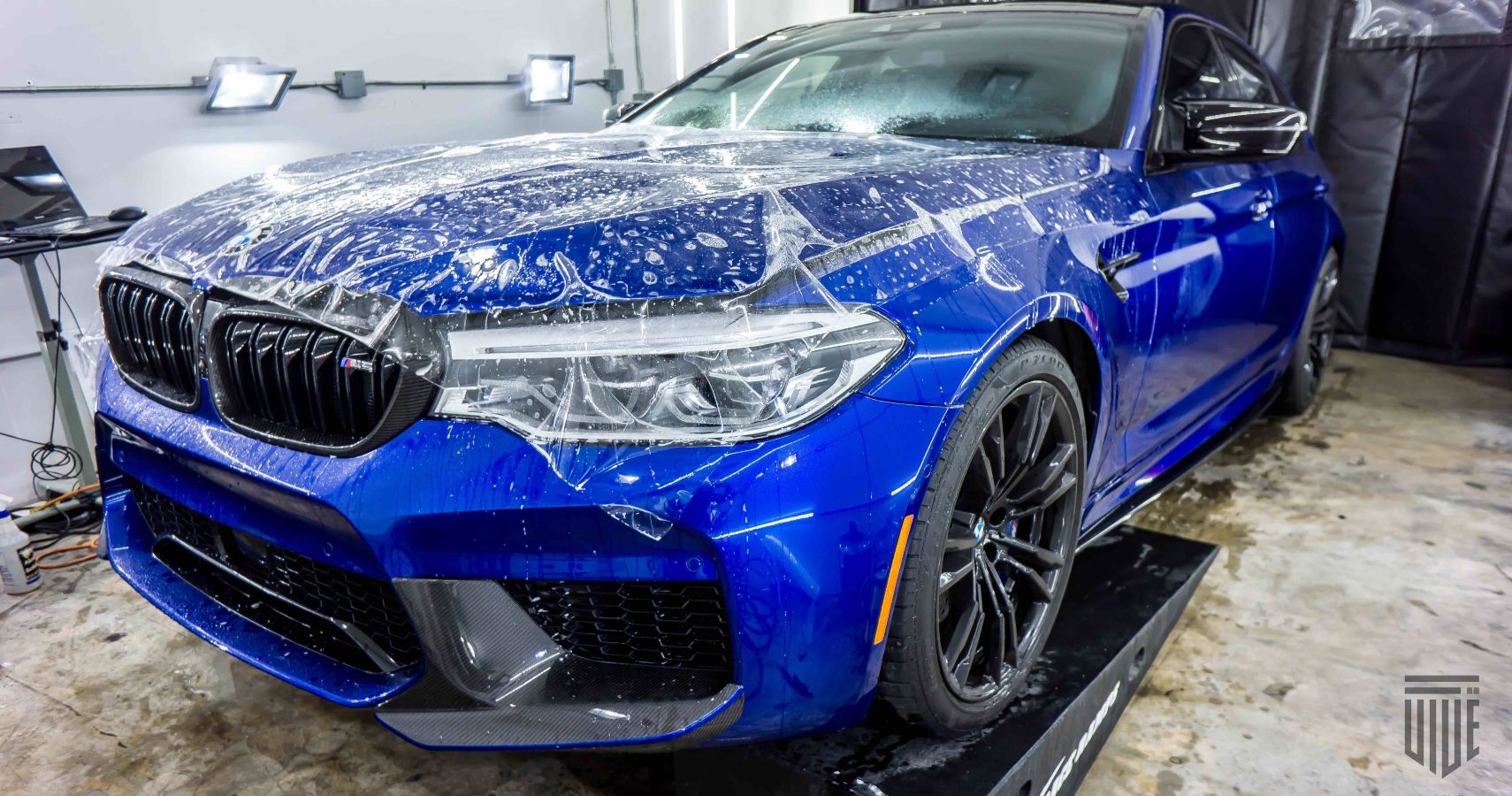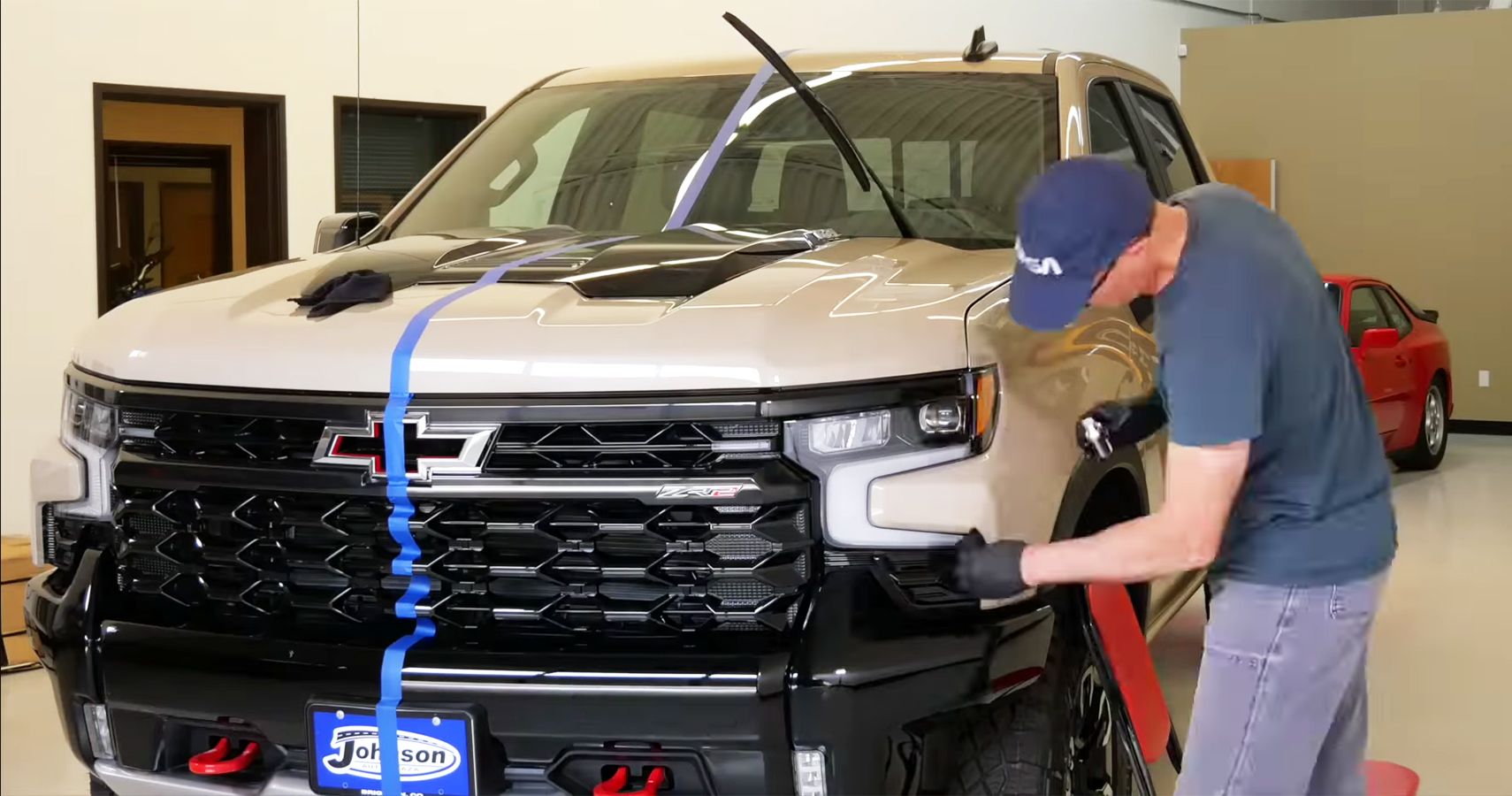Paint protection has come a long way since the days of wax on, wax off. Carnauba or even synthetic waxes no longer rule the roost when it comes to having that wet, glassy look year-round on your paint. Two of the most popular methods of keeping your car’s shiny paintwork looking shiny is through applying a ceramic coat, or a paint protection film also known as PPF.
There are pros and cons to each, with regards to cost, durability, maintenance and more. Whether you’re an enthusiast who wants to protect their expensive investment, or just a regular car owner who appreciates a shiny car, a ceramic coating or PPF would likely be just what you’re looking for. In many cases, it’s best to apply either of these paint protection methods when your car is brand new, and the paint is in the best possible condition.
This way you get to protect the finish before it picks up swirls, scratches, blemishes or worse. It is possible that a car right from the dealership has fine swirl marks which could affect the final finish, requiring an additional stage of paint correction first. This is usually factored into the price of either a ceramic coating or PPF offered by a detailing shop, but the less correction work they have to do, the lower the cost to you. But which one is right for you – ceramic coating, or PPF?
How Does A Ceramic Coating Or PPF Help?
First, a quick primer on the makeup of your paintwork. The first layer over the bare metal is primer, followed by the base coat of color, with a clear coat layer right on top. What happens as a car ages is that swirl marks, blemishes, spider webs, marring etc. get introduced to the clear coat layer. These imperfections in the surface is the reason why a shiny new car loses its sheen over a period of time. All the marks make light refract differently, leading to the dull look.
A paint correction process includes decontamination through claying, and scratch removal through polishing which reduces the rough edges of those imperfections to bring back the shine. A ceramic coat is a chemical polymer that’s applied on top of corrected paint to further fill in the imperfections and form a hard, protective layer above the clear coat. PPF is a replaceable, polyurethane-based film that provides shine and protects the paint from rock chips. In the case of TPU-based PPF, it’s even self-healing, with the ability to make small scratches disappear with heat.
Ceramic Coating: Pros And Cons
Ceramic coatings were developed as an alternative to synthetic waxes, which themselves offered better paint protection over natural waxes used on paint earlier. Ceramic coatings are usually about 2 microns thick; a human hair is 70 microns thick for comparison. This super-thin, extra-hard layer bonds with the clear coat and provides protection to the paint from the sun’s UV rays, acidic bird droppings and dirt. Generally, a ceramic coated car is easier to clean/wash than an un-coated car since dirt doesn’t stick to it. It’s also highly hydrophobic, so water just beads up on the ceramic layer and rolls off. Most ceramic coatings, even the cheaper ones, will offer many of the benefits but in varying degrees of durability mainly.
Ceramic coatings do need a little special maintenance in the way of top-up silica sprays to effectively last up to the 3-5 years of its lifespan. Also remember that if you polish the car to remove scratches, you’ll also remove the ceramic coat. Ceramic coatings start at around $1,500 but can go up to $3,000 based on number of coatings you want, size of your car, and how premium a brand you choose.
Paint Protection Film: Pros And Cons
PPF was actually invented by 3M to protect helicopter blades from wearing out! If it works there, you know it’ll work on your car. PPF also protects your paintwork from light scratches that come from washing your car, bird droppings, sun exposure and more. But it’s more effective against rock chips since it’s an additional layer over your paint. If it gets too dinged up, you can always just replace it! In many cases, it’ll be cheaper to replace a particular section of PPF than to repaint a body panel. The biggest advantage is that more advanced PPFs are self-healing. Left out in the sun, or treated with a heat gun, the film can actually expand to fill up small scratches. That and the fact that a quality PPF lasts 10 years makes it a great choice.
Not all PPF is created equally though, so make sure you do your research. Cheaper PPF can need to be replaced more frequently, so stick to the trusted brands. PPF can be applied to a whole car, or just individual panels. Costs range from $700 for a partial install on the bumper, partial hood and fenders, to anywhere between $5-9,000 for a whole car.
Ceramic Vs PPF: Which Is Better?
It comes down to what you want from your paint protection. Do you want the deeper gloss offered by a ceramic coat, and ease of everyday cleaning? Or the hassle-free ownership experience of PPF that self-heals and can look fresher for longer, even on cars that see a lot of rock chips? As a plus, if you have the budget, a ceramic coating can be applied on top of PPF to give you all the benefits of the latter, with the hydrophobic properties of the former. Whichever way you go, you can bet your car will stay shiny for much, much longer than if you didn’t choose either.


